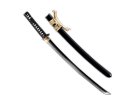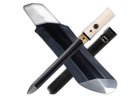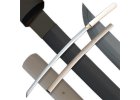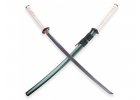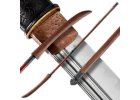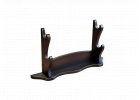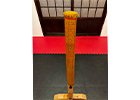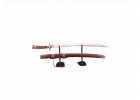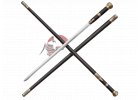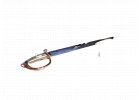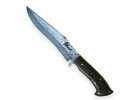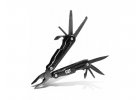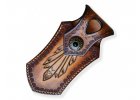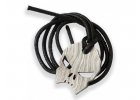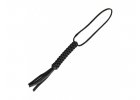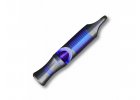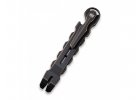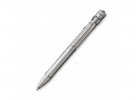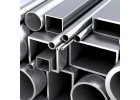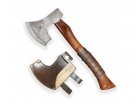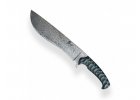Katanas without a groove (bo-hi) are traditional Japanese swords, which are characterized by a smooth blade without the characteristic depression (bo-hi) that is common in many other katanas. This groove (bo-hi) is usually added to reduce the weight of the blade without compromising its strength, while also improving the sword's balance during handling.
#ShowMore#
Katanas without bo-hi, however, are specific in that they have a full blade, making them heavier and often sturdier swords. The benefits of such a blade are primarily in its strength and penetrating power. A smooth, grooveless blade provides maximum mass and thus more energy when slashing, which can be useful in combat conditions where hard targets need to be penetrated. These swords are popular among warriors who prefer heavier weapons with more punch in their strike. Additionally, the absence of bo-hi can lead to a quieter chop, which is an added advantage in stealthy or fast movements where the chopping sound can be a disadvantage. Katanas without a bo-hi groove are often prized for their traditional aesthetics and strength, representing the full weight and power of Japanese sword making. At the same time, they honor the ancient martial traditions of the samurai.
Comparison of katana with bo-hi (groove) and katana without bo-hi (without groove):
As with the wakizashi, there are two main variations of the katana based on the presence or absence of a bo-hi groove, both of which have their advantages depending on the intended use and fighting style.
Katana with bo-hi (gutter)
- Weight reduction: Bo-hi lightens the blade of the katana, making it lighter and easier to handle. This makes it suitable for fast and technical fighting styles where the emphasis is on speed.
- Faster Movements: The lower weight of the bo-hi katana allows the warrior to execute nimble and fluid strikes, making it an ideal tool for fighting styles based on speed and agility.
- Acoustic Feedback: The bo-hi produces a characteristic swishing sound when slashing, which can be useful in training to verify proper technique. This sound also adds a visual and auditory effect in combat performances.
- Better Balance: The reduced weight due to the bo-hi can improve the overall balance of the katana, making it easier to control during maneuvers and allowing for more effective leading of slashes.
- Aesthetic value: Bo-hi gives the katana a sleek and dynamic appearance, making it aesthetically appealing, especially among collectors and warriors who appreciate traditional Japanese sword culture.
Katana without bo-hi (without gutter)
- Greater strength and durability: Katana without bo-hi has a full blade, which provides greater strength and durability. It is a sturdier version that better resists impact and provides maximum power at impact.
- Stronger Strikes: Due to its higher weight, the bo-hi katana provides stronger and more energetic strikes. The heavier blade transfers more force to the chop, which is useful when piercing hard materials or in a fighting style focused on powerful strikes.
- More traditional designs: Katanas without bo-hi are often considered more traditional, and their full blade is associated with the original samurai swords, which were designed for heavy and long fights.
- Silent slash: The bo-hiless katana does not produce the characteristic swishing sound when slashing, which can be advantageous in situations where a silent, stealthy strike is required.
- Greater stability: Katanas without bo-hi are ideal for warriors who prefer stable and solid swords for accurate and powerful attacks.
Summary: Bo-hi vs. No bo-hi in katana
- Katana with bo-hi: Suitable for warriors who prefer a lighter, nimbler katana with better maneuverability and speed. It is ideal for fast and technical fighting styles and provides acoustic feedback during training.
- Katana without bo-hi: A better choice for those who prefer a sturdier, stronger sword with more powerful strikes. This option is ideal for situations requiring power attacks and greater blade durability.
The choice between these two options depends on your individual fighting style and whether you prefer speed (bo-hi) or strength and solidity (no bo-hi).

_-_edited.png)
